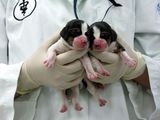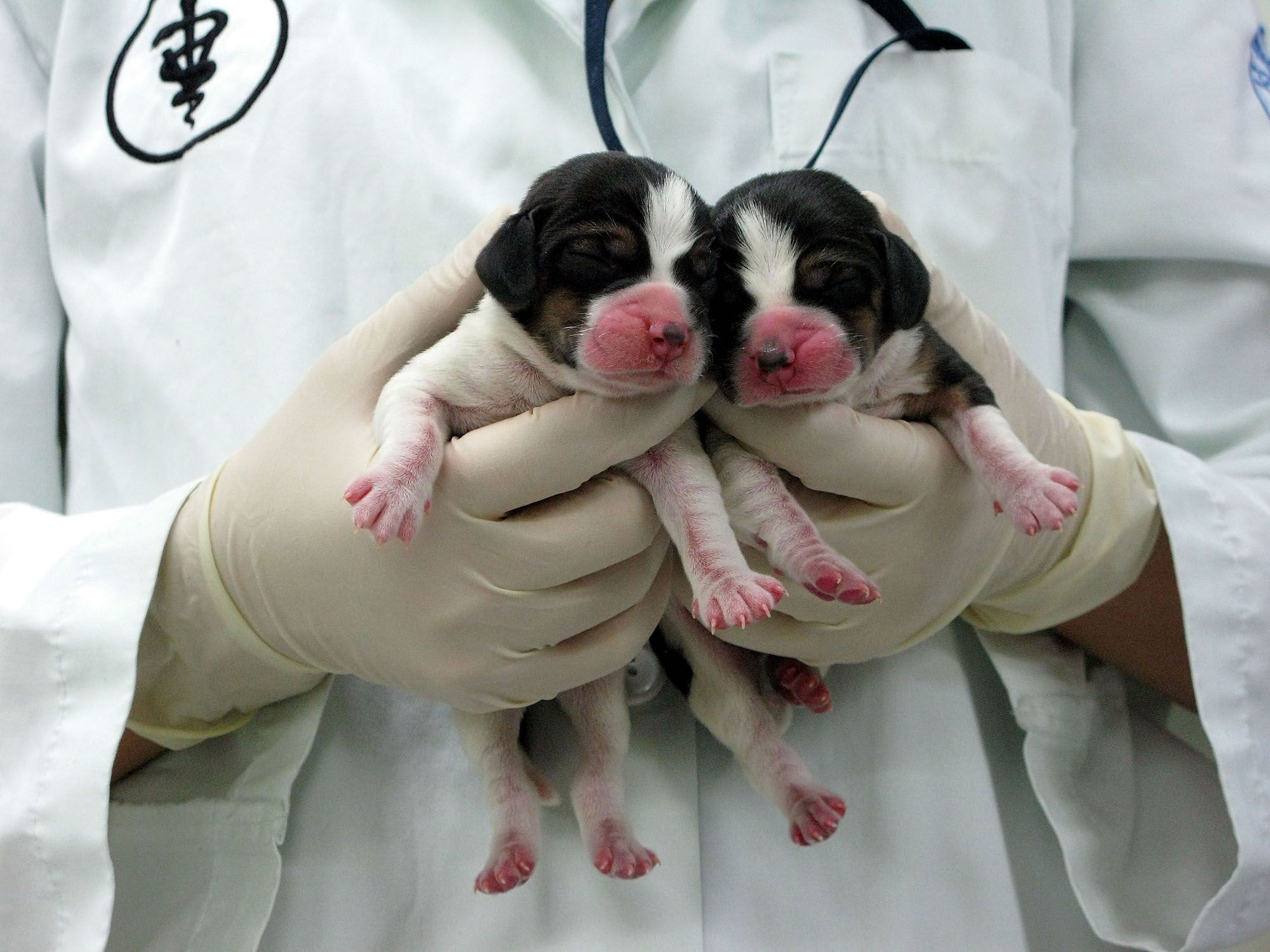Give 2 Examples of Clones
Cloning
Cloning
Cloning is a technique scientists use to create exact genetic replicas of genes, cells, or animals.
Subjects
Biology, Genetics, Health, Chemistry
Cloning is a technique scientists use to make exact genetic copies of living things. Genes, cells, tissues, and even whole animals can all be cloned. Some clones already exist in nature. Single-celled organisms like bacteria make exact copies of themselves each time they reproduce. In humans, identical twins are similar to clones. They share almost the exact same genes. Identical twins are created when a fertilized egg splits in two. Scientists also make clones in the lab. They often clone genes in order to study and better understand them. To clone a gene, researchers take DNA from a living creature and insert it into a carrier like bacteria or yeast. Every time that carrier reproduces, a new copy of the gene is made. Animals are cloned in one of two ways. The first is called embryo twinning. Scientists first split an embryo in half. Those two halves are then placed in a mother's uterus. Each part of the embryo develops into a unique animal, and the two animals share the same genes. The second method is called somatic cell nuclear transfer. Somatic cells are all the cells that make up an organism, but that are not sperm or egg cells. Sperm and egg cells contain only one set of chromosomes, and when they join during fertilization, the mother's chromosomes merge with the father's. Somatic cells, on the other hand, already contain two full sets of chromosomes. To make a clone, scientists transfer the DNA from an animal's somatic cell into an egg cell that has had its nucleus and DNA removed. The egg develops into an embryo that contains the same genes as the cell donor. Then the embryo is implanted into an adult female's uterus to grow. In 1996, Scottish scientists cloned the first animal, a sheep they named Dolly. She was cloned using an udder cell taken from an adult sheep. Since then, scientists have cloned cows, cats, deer, horses, and rabbits. They still have not cloned a human, though. In part, this is because it is difficult to produce a viable clone. In each attempt, there can be genetic mistakes that prevent the clone from surviving. It took scientists 276 attempts to get Dolly right. There are also ethical concerns about cloning a human being. Researchers can use clones in many ways. An embryo made by cloning can be turned into a stem cell factory. Stem cells are an early form of cells that can grow into many different types of cells and tissues. Scientists can turn them into nerve cells to fix a damaged spinal cord or insulin-making cells to treat diabetes. The cloning of animals has been used in a number of different applications. Animals have been cloned to have gene mutations that help scientists study diseases that develop in the animals. Livestock like cows and pigs have been cloned to produce more milk or meat. Clones can even "resurrect" a beloved pet that has died. In 2001, a cat named CC was the first pet to be created through cloning. Cloning might one day bring back extinct species like the woolly mammoth or giant panda.

Two beagle puppies successfully cloned in Seoul, South Korea. These two dogs were cloned by a biopharmaceutical company that specializes in stem cell based therapeutics.
Photograph by Handout
chromosome
Noun
strand of DNA and associated proteins in the nucleus of cells that carries the organism's genetic information.
clone
Noun
cell or group of cells that is genetically identical to its ancestor cell or group of cells.
DNA
Noun
(deoxyribonucleic acid) molecule in every living organism that contains specific genetic information on that organism.
embryo
Noun
unborn animal in the early stages of development.
ethical
Adjective
morals and behaviors deemed acceptable by society
fertilize
Verb
to make productive or fertile.
gene
Noun
part of DNA that is the basic unit of heredity.
replica
Noun
an exact copy or reproduction.
somatic cell
Noun
cells that make up every part of an organism; not a sperm or egg cell
stem cell
Noun
early cell that can develop into any type of cell or tissue in the body
Source: https://www.nationalgeographic.org/encyclopedia/cloning/


0 Response to "Give 2 Examples of Clones"
Post a Comment